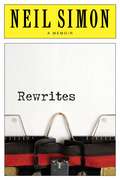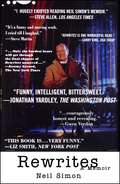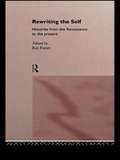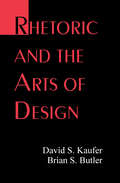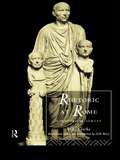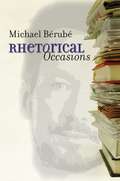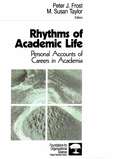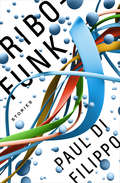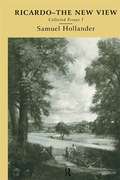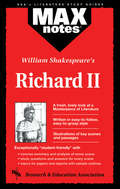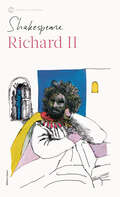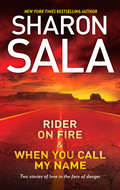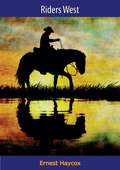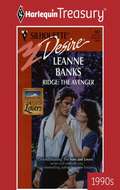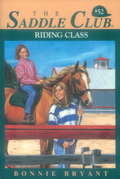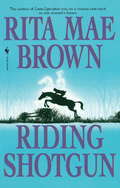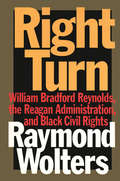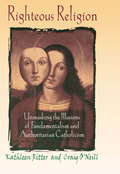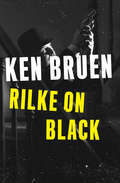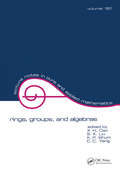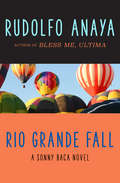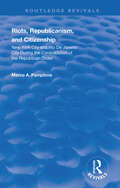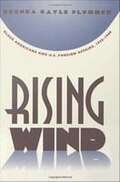- Table View
- List View
Rewrites: A Memoir
by Neil SimonBarefoot in the Park, The Odd Couple, Plaza Suite, The Goodbye Girl, The Out-of-Towners, The Sunshine Boys -- Neil Simon's plays and movies have kept many millions of people laughing for almost four decades. Today he is recognized not only as the most successful American playwright of all time, but also as one of the greatest. More than the humor, however, it is the humanity of Neil Simon's vision that has made him America's most beloved playwright and earned him such enduring success. Now, in Rewrites, he has written a funny, deeply touching memoir, filled with details and anecdotes of the writing life and rich with the personal experiences that underlie his work. Since Come Blow Your Horn first opened on Broadway in 1960, few seasons have passed without the appearance of another of his laughter-filled plays, and indeed on numerous occasions two or more of his works have been running simultaneously. But his success was something Neil Simon never took for granted, nor was the talent to create laughter something that he ever treated carelessly: it took too long for him to achieve the kind of acceptance -- both popular and critical -- that he craved, and the path he followed frequently was pitted with hard decisions. All of Neil Simon's plays are to some extent a reflection of his life, sometimes autobiographical, other times based on the experiences of those close to him. What the reader of this warm, nostalgic memoir discovers, however, is that the plays, although grounded in Neil Simon's own experience, provide only a glimpse into the mind and soul of this very private man. In Rewrites, he tells of the painful discord he endured at home as a child, of his struggles to develop his talent as a writer, and of his insecurities when dealing with what proved to be his first great success -- falling in love. Supporting players in the anecdote-filled memoir include Sid Caesar, Jerry Lewis, Walter Matthau, Robert Redford, Gwen Verdon, Bob Fosse, Maureen Stapleton, George C. Scott, Peter Sellers, and Mike Nichols. But always at center stage is his first love, his wife Joan, whose death in the early seventies devastated him, and whose love and inspiration illuminate this remarkable and revealing self-portrait. Rewrites is rich in laughter and emotion, and filled with the memories of a sometimes sweet, sometimes bittersweet life.
Rewrites: A Memoir
by Neil SimonBarefoot in the Park, The Odd Couple, Plaza Suite, The Goodbye Girl, The Out-of-Towners, The Sunshine Boys -- Neil Simon's plays and movies have kept many millions of people laughing for almost four decades. Today he is recognized not only as the most successful American playwright of all time, but also as one of the greatest. More than the humor, however, it is the humanity of Neil Simon's vision that has made him America's most beloved playwright and earned him such enduring success. Now, in Rewrites, he has written a funny, deeply touching memoir, filled with details and anecdotes of the writing life and rich with the personal experiences that underlie his work. Since Come Blow Your Horn first opened on Broadway in 1960, few seasons have passed without the appearance of another of his laughter-filled plays, and indeed on numerous occasions two or more of his works have been running simultaneously. But his success was something Neil Simon never took for granted, nor was the talent to create laughter something that he ever treated carelessly: it took too long for him to achieve the kind of acceptance -- both popular and critical -- that he craved, and the path he followed frequently was pitted with hard decisions. All of Neil Simon's plays are to some extent a reflection of his life, sometimes autobiographical, other times based on the experiences of those close to him. What the reader of this warm, nostalgic memoir discovers, however, is that the plays, although grounded in Neil Simon's own experience, provide only a glimpse into the mind and soul of this very private man. In Rewrites, he tells of the painful discord he endured at home as a child, of his struggles to develop his talent as a writer, and of his insecurities when dealing with what proved to be his first great success -- falling in love. Supporting players in the anecdote-filled memoir include Sid Caesar, Jerry Lewis, Walter Matthau, Robert Redford, Gwen Verdon, Bob Fosse, Maureen Stapleton, George C. Scott, Peter Sellers, and Mike Nichols. But always at center stage is his first love, his wife Joan, whose death in the early seventies devastated him, and whose love and inspiration illuminate this remarkable and revealing self-portrait. Rewrites is rich in laughter and emotion, and filled with the memories of a sometimes sweet, sometimes bittersweet life.
Rewriting the Self: Histories from the Middle Ages to the Present
by Roy PorterRewriting the Self is an exploration of ideas of the self in the western cultural tradition from the Renaissance to the Present. The contributors analyse differing religious, philosophical, psychological, political, psychoanalytical and literary models of personal identity. They examine these models from a number of viewpoints, including the history of ideas, contemporary gender politics, and post-modernist literary theory. Rewriting the Self offers a challenge to the received version of the 'ascent of western man'. Lively and controversial, the book broaches big questions in an accessible way. Rewriting the Self arises from a seminar series held at the Institute of Contemporary Arts in London. The contributors include prominent academics from a range of disciplines.
Reynolds Metals Co.: Consumer Products Division
by Samuel ChunReynolds Consumer Products Division must decide whether to discontinue its program of case allowances in favor of discretionary trade dollars targeted for market development.
Rhetoric and the Arts of Design
by David S. Kaufer Brian S. ButlerThe design arts -- from the design of buildings and machines to software and interfaces -- are associated with types of knowledge and performance thought to be structured, modular, and systematic. Such arts have become increasingly prestigious in our technocratic society. Since Aristotle, the art of rhetoric was conceived as a loosely structured "practical" art thought to be limited in the extent to which it could mimic more precise subject matters. The art of rhetoric has been controversial since classical times, but its status has sunk even lower since the industrial revolution -- a point when civic cultures began to cede authority and control to the cultures of specialized experts. Many sympathizers of rhetoric have resisted its decline by calling for a civic art of public discourse to stand in opposition to a technocratic specialized discourse that has come, increasingly, to disenfranchise the ordinary citizen. This is the first book to question the rhetoric/technical knowledge split from a more fundamental perspective. To get some perspective on what is at stake in rhetoric's traditional classification as a "practical" art, the authors: * explore the distinction between practical and design arts; * enumerate the various criteria cited in the literature for qualifying a cluster of knowledge and performative skills to count as an art of design; * show how the knowledge and performative skills associated with the art of rhetoric meet the major requirements of design knowledge; * propose a general architecture of rhetorical design, one descriptive both of civic address and specialized academic argument; * turn to the Lincoln/Douglas debates to embody and provide some empirical support and illustration for their architecture; * demonstrate how Lincoln and Douglas can be thought of as expert designers whose rhetoric is highly structured and modular; and * explain how the rhetoric of both rhetorical agents can be represented in the layers and modules that one needs to display plans for buildings, software, or other design artifacts. These layers and modules are not just post hoc annotations of the debates; they also illuminate new and systematic ways for viewing the debates -- and by implication, other specimens of rhetoric -- in terms of strategies of artistic production. Kaufer and Butler conclude their presentation by citing some of the research and educational implications that follow from housing rhetoric within the family of design arts.
Rhetoric at Rome: A Historical Survey
by Professor M Clarke M. L. ClarkeThis new edition of M.L. Clarke's 1953 classic study of Roman rhetoric incorporates corrections and a new introduction by D.H. Berry. The bibliography has been substantially updated and supplemented by suggestions for further reading.
Rhetorical Occasions
by Michael BérubéA nationally known scholar, essayist, and public advocate for the humanities, Michael Berube has a rapier wit and a singular talent for parsing complex philosophical, theoretical, and political questions. Rhetorical Occasions collects twenty-four of his major essays and reviews, plus a sampling of entries on literary theory and contemporary culture from his award-winning weblog. Selected to showcase the range of public writing available to scholars, the essays are grouped into five topical sections: the Sokal hoax and its effects on the humanities; cosmopolitanism, American studies, and cultural studies; daily academic life inside and outside the classroom; the events of September 11, 2001, and their political aftermath; and the potential discursive and tonal range of academic blog writing. In lively and entertaining prose, Berube offers a wide array of interventions into matters academic and nonacademic. By example and illustration, he reminds readers that the humanities remain central to our understanding of what it means to be human.
Rhythms of Academic Life: Personal Accounts of Careers in Academia (Foundations for Organizational Science Series)
by Peter J. Frost M TaylorThis invaluable source book offers guidance, support and advice for those contemplating or involved in academic careers. The contributions provide rich, personal, sometimes poignant and often humorous accounts of shared and unique experiences of those in the world of academia.
Ribofunk: Stories (Di Filippo, Paul Ser.)
by Paul Di FilippoTackling genetic engineering, &“Di Filippo&’s effervescent prose can provoke both hilarity and haunting reflections on our species&’ possible fate&” (Publishers Weekly).Ribofunk contains eleven masterful and surprising works of imagination. In all of them, biology is the science that drives the engine of life and of story: the Protein Police patrol for renegade gene‑splicers; part‑human sea creatures live in the Great Lakes and clean up toxic spills; a river has become sentient; there is a bodyguard who is part wolverine and a thrill‑seeker climbs a skyscraper and gets stuck, literally.
Ricardo - The New View: Collected Essays I
by Samuel HollanderSamuel Hollander's interpretation of Ricardo has attracted apoplectic responses from both Right and Left. This volume collects together the material needed to evaluate these responses. His basic position - that Ricardo stands in a continuous analytical line leading from Adam Smith to Alfred Marshall - is seen to antagonise both those who argue for a 'marginal revolution' and a sharp divide between classical and neo-classical economics, and those who want to champion Ricardo as a forerunner of Sraffa.
Richard II (MAXnotes Literature Guides)
by Michael MorrisonREA's MAXnotes for William Shakespeare's Richard II The MAXnotes offers a comprehensive summary and analysis of Richard II and a biography of William Shakespeare. Places the events of the play in historical context and discusses each act in detail. Includes study questions and answers along with topics for papers and sample outlines.
Richard III (The Folger Shakespeare Library)
by William ShakespeareEach Folger edition includes: Freshly edited text based on the best early printed version of the play; Full explanatory notes conveniently placed on pages facing the text of the play; Scene-by-scene plot summaries; A key to famous lines and phrases; and more.
Rider on Fire & When You Call My Name
by Sharon SalaRIDER ON FIRELike a bat out of hell, undercover DEA agent Sonora Jordan jumps on her motorcycle and takes off to parts unknown, escaping the deadly drug dealers who had put a price on her head. All the while, she is haunted by dreams of a man whose place in her life she is yet to discover.When she literally comes face-to-face with the man of her dreams, it's as if time stands still. Her long-dormant heart is finally awakened. But will she ever be truly free from the dangerous life she left behind?WHEN YOU CALL MY NAMEShe gave him the most precious gift of all-the gift of life. But something more than a blood transfusion links Wyatt Hatfield to the stranger who saved him. Something that allows her to call out to him for help in the middle of the night-without ever speaking a word.Now it's his turn to give. For the connection that links Wyatt to Glory Dixon is the only hope he has of saving her from danger....
Riders West
by Ernest HaycoxA MAN ON THE PROD—A RANGE AT WARNeel St. Could, forced by his vendetta with Dan Bellew, had a plan to turn the peaceful valley into an outlaw strip ruled by flaming guns.First he put his own crooked sheriff into office. Then he imported an army of gunslicks, took over Trail City and burned out the nesters. With the remaining spreads isolated, St. Cloud made his move.And on a storm-lashed night a hundred guns fought it out—with St. Cloud and Dan Bellew clashing head-on in their own personal battle.“Fast and Breathless”—New York Times
Ridge: the Avenger
by Leanne BanksSons and Lovers "Groundbreaking! The Sons and Lovers series will enthrall you." -bestselling author Suzanne Forster SHE WAS THE MARRYING KIND... Ridge Jackson's plan was simple: protect lovely Dara Seabrook and get revenge on her godfather at the same time. Ridge was a professional; he knew the dangers of mixing business with pleasure. How then had the voluptuous brunette gotten under his skin? BUT HE WASN'T ABOUT TO GET HOOKED! Dara's sultry blue eyes soon made Ridge forget all about revenge and remember how good a woman's love could be. But now Dara was dangerously close to stealing his heart-and about to discover how she figured in an old score he had vowed to settle.... SONS AND LOVERS: Three brothers denied a father's name, but granted the gift of love from three special women.
Riding Class (Saddle Club #52)
by Bonnie BryantEmily has cerebral palsy, but she and her specially trained horse get around just fine. The Saddle Club girls make friends with Emily and even take her on her first trail ride.
Riding Shotgun
by Rita Mae BrownThe author of Venus Envy takes you on a riotous ride back to one woman's future...In a delightful contemporary farce with a riotous twist, Rita Mae Brown welcomes you to Virginia's horse country, where a fox hunt is about to lead a 1990s woman, Cig Blackwood, into a 1690s adventure of the heart. Infidelity, single motherhood, family betrayal, and the thrill of the hunt (in many varieties) are hilariously and poignantly played out in this captivating novel of time travel and self-discovery.From the Paperback edition.
Riding Shotgun
by Rita Mae BrownThe author of Venus Envy takes you on a riotous ride back to one woman's future... In a delightful contemporary farce with a riotous twist, Rita Mae Brown welcomes you to Virginia's horse country, where a fox hunt is about to lead a 1990s woman, Cig Blackwood, into a 1690s adventure of the heart. Infidelity, single motherhood, family betrayal, and the thrill of the hunt (in many varieties) are hilariously and poignantly played out in this captivating novel of time travel and self-discovery.
Right Turn: William Bradford Reynolds, the Reagan Administration, and Black Civil Rights
by Raymond WoltersIn the spirit of the time, the Civil Rights Act of 1964 and the Voting Rights Act of 1965 called for nondiscrimination for American citizens, seeking equality without regard for race, color, or creed. After the mid-1960s, to make amends for wrongs of the past, some people called for benign discrimination to give blacks a special boost. In business and government this could be accomplished through racial preferences or quotas; in public education, by considering race when assigning students to schools. By 1980 this course reached a crossroads.Raymond Wolters maintains that Ronald Reagan and William Bradford Reynolds made the "right turn" when they questioned and limited the use of racial considerations in drawing electoral boundaries. He also documents the Reagan administration's considerable success in reinforcing within the country, and reviving within the judiciary, the conviction that every person black or white should be considered an individual with unique talents and inalienable rights.This book begins with a biographical chapter on William Bradford Reynolds, the Assistant Attorney General who was the principal architect of Reagan's civil rights policies. It then analyzes three main civil rights issues: voting rights, affirmative action, and school desegregation. Wolters describes specific cases: at-large elections and minority vote dilutions; congressional districting in New Orleans; legislative districting in North Carolina; the debates over the Civil Rights Act of 1964; social science critiques of affirmative action; the question of quotas; and school desegregation and forced busing.Because Ronald Reagan and William Bradford Reynolds were men of the right, and because most journalists and historians are on the left, Wolters feels the "people of words" have dealt harshly with the Reagan administration. In writing this book, he hopes to correct the record on a subject that has been badly represented. Wolters points out that, beginning in the 1980s and continuing in the 1990s, the Supreme Court endorsed the legal arguments that Reagan's lawyers developed in the fields of voting rights, affirmative action, and school desegregation. In Right Turn, Wolters responds to those who claimed that Reagan and Reynolds were racists who wanted to turn back the clock on civil rights, and he describes civil rights cases and controversies in a way that is comprehensible to general readers as well as to lawyers and historians.
Righteous Religion: Unmasking the Illusions of Fundamentalism and Authoritarian Catholicism
by Craig O'Neill Kathleen RitterWhy are so many individuals discouraged, at spiritual dead ends, even when they are active participants in their churches? Righteous Religion exposes the authoritarian misuse of Christian teaching that often leaves its members ignored, chastised, or belittled. This new book offers hope for anyone who has struggled with disillusionment in the face of an unbending religious system. After unmasking a bewildering network of illusions that operate beneath the surface of Fundamentalism and dogmatic Catholicism, the authors help readers find their own voices of truth. This is a candid book that analyzes the grip of Fundamentalism and Catholicism on their respective followers, despite financial and sexual scandals, misuse of power and influence, apparent hypocrisy, and selective self-righteousness of these two religious systems.Using real life stories of ordinary people in ordinary churches, Righteous Religion demonstrates that the efforts involved in maintaining illusions are incompatible with claiming a personal spiritual voice. The authors discuss the relationship between the breakdown of erroneous notions and the growth that will involve readers in finding their own voice. From the stories presented, readers will see the journey progress from questioning previously unquestioned assumptions, reclaiming the best out of their religious traditions, and then transcending that which is no longer viable by grieving over illusions, learning to live with paradox, and transforming illusions into a new, valid, and spiritually personal religious truth.As readers begin the journey of finding their own spiritual voice, their experiences will be validated by the prose and stories in Righteous Religion. Those outside of Fundamentalism and Catholicism can begin to understand the practices of these religious groups through the authors’clear explanation of the dynamics and inner workings of creed bound Fundamentalism and Catholicism. This book has appeal to anyone--whether from within or outside religious tradition--who has questioned the grip of Fundamentalism and Catholicism on individuals.
Rilke on Black (Mask Noir Ser.)
by Ken BruenA South London kidnapping goes violently awry in this &“startlingly original crime novel&” from the award-winning author of The Guards (British GQ). As pretty, well read, and available as she was, most men would have passed on a foul-mouthed jailbait junkie like Lisa. Not Nick. A bouncer from southeast London, he knew what he liked. He went in with both eyes open and stayed there—even when she burned through his savings and cost him his job. Luckily, she had an idea for bringing in extra cash: kidnap a local African American bar owner, a pretentious, yoga obsessed, Rilke-spouting man of means with a white trophy wife. He deserved a good punch to the gut. However, it was Nick&’s bad idea to bring in his neighbor, a clean-cut, Reba McEntire–loving good old boy, and psycho to the bone. But not one of them anticipated Nick&’s ex-girlfriend, Bonny, who came in out of the blue with her own agenda to ignite the biggest spark in the plot. The question isn&’t who&’s going to fire the first shot. It&’s who&’s going to fire the last. &“Fast-paced, tough and pretty sexy&” (Pulp), Rilke on Black is further proof that the author of the Jack Taylor series &“has become the crime novelist to read&” (George Pelecanos).
Rings, Groups, and Algebras
by X. H. Cao; S. X. Liu; K. P. Shum; C. C. Yang"Integrates and summarizes the most significant developments made by Chinese mathematicians in rings, groups, and algebras since the 1950s. Presents both survey articles and recent research results. Examines important topics in Hopf algebra, representation theory, semigroups, finite groups, homology algebra, module theory, valuation theory, and more."
Rio Grande Fall: Zia Summer, Rio Grande Fall, Shaman Winter, And Jemez Spring (The Sonny Baca Novels #2)
by Rudolfo AnayaA PI with deep cultural roots in his native New Mexico, Sonny Baca is guided by his intuition and guardian spirit, the coyote--but is that enough to stop a cult leader's murderous rampage? The world-famous International Balloon Fiesta of Albuquerque is one of the city's most eagerly anticipated annual events and its biggest moneymaker. But when a woman plunges to her death from one of the balloons--foreshadowed by Sonny's vision of a body plummeting from the sky--Sonny's sure it's murder. The dead woman was the chief witness to testify against the cult implicated in the murder for hire of Sonny's cousin Gloria, whose death still haunts him. In addition to motive, Sonny finds means and opportunity: a homeless family who saw someone push Veronica Worthy out of the hot-air balloon. Worthy was one of the four wives of Raven, leader of the sun cult, and a dangerous, shamanlike criminal who's supposed to be dead. But the four black feathers found on the corpse are his calling card--clues to let Sonny know he's alive and kicking. And his murder spree isn't over. Led by his spirit guides, Sonny races to stop a vengeful madman and save the woman he loves.
Riots, Republicanism, and Citizenship: New York City and Rio de Janeiro City during the Consolidation of the Republican Order
by Marco A. PamplonaFirst Published in 1996. This book is an analysis of the different conceptions of citizenship displayed by elite republican rhetoric in the press when commenting on riots in New York City and in the City of Rio de Janeiro during the consolidation of the republican order in the United States and in Brazil.
Rising Wind
by Brenda Gayle PlummerAfrican Americans have a long history of active involvement and interest in international affairs, but their efforts have been largely ignored by scholars of American foreign policy. Gayle Plummer brings a new perspective to the study of twentieth-century American history with her analysis of black Americans' engagement with international issues, from the Italian invasion of Ethiopia in 1935 through the wave of African independence movements of the early 1960s. Plummer first examines how collective definitions of ethnic identity, race, and racism have influenced African American views on foreign affairs. She then probes specific developments in the international arena that galvanized the black community, including the rise of fascism, World War II, the emergence of human rights as a factor in international law, the Cold War, and the American civil rights movement, which had important foreign policy implications. However, she demonstrates that not all African Americans held the same views on particular issues and that a variety of considerations helped shape foreign affairs agendas within the black community just as in American society at large.
